A moving mural about the torture suffered by the Nazis of the Jews of Thessaloniki, was completed on Michail Kalou Street, on one of the walls that enclose the New Railway Station of Thessaloniki, where the Rezi Vardar district was located. This is another action of the "Vardari Neighborhood Group" for the revival of the history of the area, which is part of the activities of the Self-Help Promotion Program of the Aristotle University of Thessaloniki.
As the GRTimes.gr report states, the mural is a symbolic composition of places, people and events concerning the Jewish Community of Thessaloniki during the Second World War, inspired by photographic material of the time and the historical documentation was done by Andreas Assael (Historical – Researcher) and Vasiliki Kartsiaklis (Archaeologist – Guide, member of dot2dot).
The narrative begins with the Settlement of Baron Hirsch during the Second World War, followed by an image that refers to the dramatic events of "Black Saturday", while the third and fourth acts depict the implementation of the Nuremberg Laws by depicting three children with the characteristic star on the lapel and the entrance from the Hirsch ghetto. The last images refer to the departure of the "death trains" from the Old Railway Station to the concentration camps, while the protagonists of the narrative are children.
The mural - like the first one with the Regie Ottoman Tobacco Monopoly Company - is artistically curated by the UrbanAct group and realized by the street artist Same84, while the project is carried out with the support of Action Aid as part of the competition " SKG in action", in which the "Vardari Neighborhood Group" participated. It is noted that the creation of the mural began on Sunday, February 28 and was completed today.
The story as described on the plaque placed at the site of the mural:
Baron Hirs settlement of Thessaloniki during World War II. Stavrou Voutira Street. A child stands in the center of Baron Hirsch's settlement, unaware of the events that will follow. The neighborhood was created opposite the Old Railway Station, to house fire victims of 1890. Before World War II, Thessaloniki had the largest Jewish Community in Greece. During the German occupation, the Jewish population was approximately 50,000 people. During the years 1941 to 1943 the thriving Jewish Community of Thessaloniki was destroyed. Fewer than 2,000 Jews returned to Thessaloniki after the end of the war.
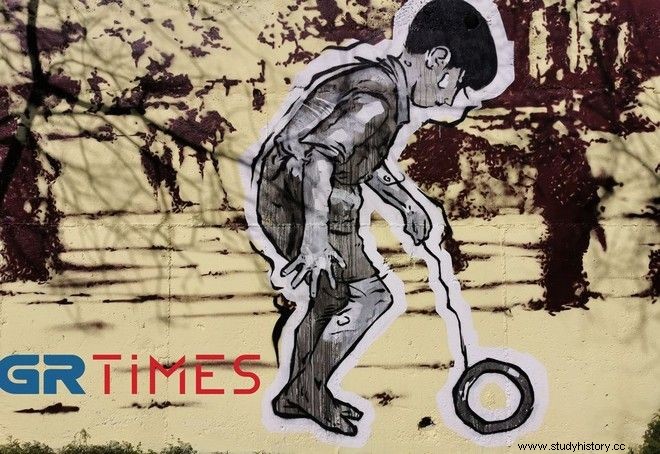
July 11, 1942, Black Saturday – Freedom Square. Public humiliation of the male Jewish population of Thessaloniki A Wehrmacht officer watches the humiliating "gymnastic demonstrations" that the Jews undergo under the hot sun, on Ionos Dragoumi Street. Testimonies state that the main place of humiliation was right in front of the then Ionian Bank.
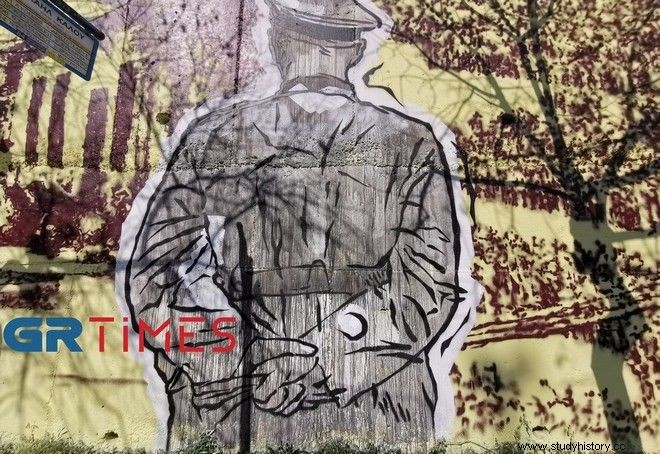
July 11, 1942, Black Saturday – Freedom Square. The Nazis ordered all male Jews of Greek citizenship, aged 18 to 45, to gather in Liberty Square under the pretext of being listed on labor lists. Public humiliation followed, while most of them were then sent to forced labor. The photograph was taken from the RITZ hotel, which was located at the corner of Mitropoleos and Venizelos streets.
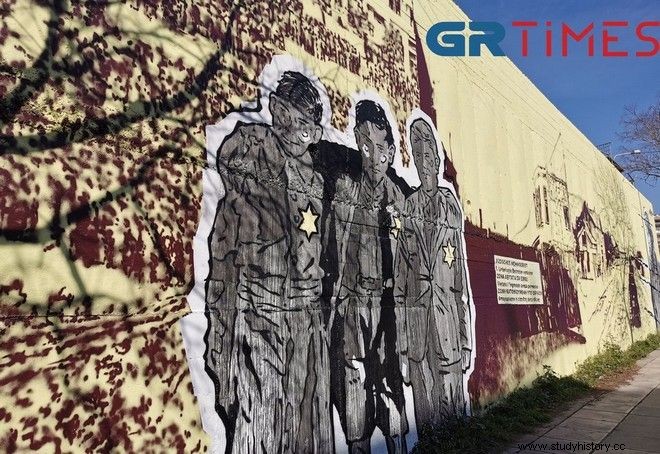
Three children in the ghetto. In February 1943, the Nuremberg Laws came into force. Among other things, all the Jews of Thessaloniki, over the age of five, had to wear the yellow Star of David, Jewish shops and houses were to be clearly marked with similar signs and the Jewish population was to be gradually limited to ghettos created in the city.
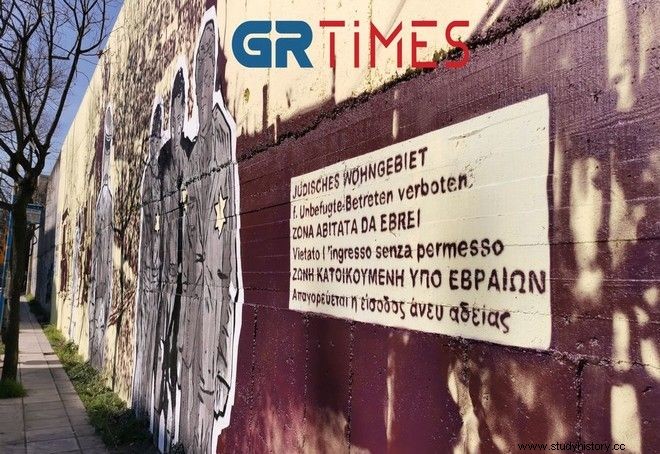
Exterior view of Baron Hirsch's ghetto – or Baron Hirsch's transport camp. At least four ghettos were created in Thessaloniki. Baron Hirst's quarter was one of them. On March 4, 1943, its fencing was completed. Later, due to its location, it was the transit center for the gradual transfer of Jews to the city's Railway Station and from there to the concentration camps, mainly Auschwitz-Birkenau.
Old Railway Station of Thessaloniki. From here the death trains left for the concentration camps. On March 15, 1943 the first train started with 2,800 people. People crammed into overcrowded wagons meant for transporting animals, with 80 people each, set off on a journey that lasted days, under miserable conditions. By August 10, a total of 19 trains and 46,061 Jews were forced to leave the city. By the end of August, the "Jerusalem of the Balkans" had been emptied of Jews.
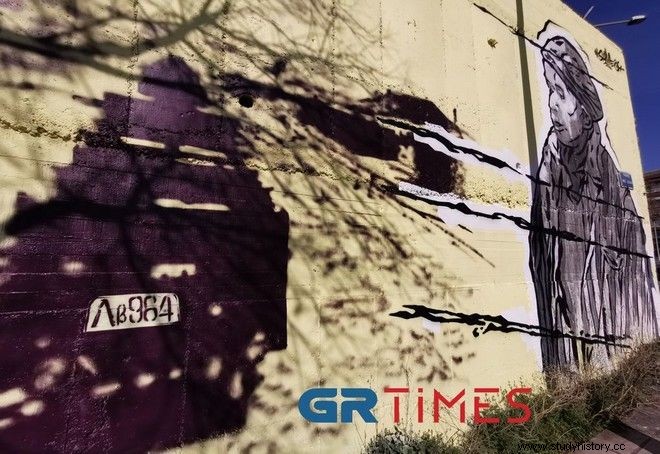
Children in a concentration camp. The Nazis and their collaborators killed at least 1,500,000 children during the war. Among them, over 1,000,000 were Jewish children, tens of thousands were Roma children, as well as children who had mental retardation and physical disabilities. Infants and young children were killed immediately after their arrival in the camps and the infamous "sorting". Children over the age of 12 were used in forced labor or as test animals in horrific medical experiments. Others were killed in reprisals or in military operations "against the Resistance".
Follow it News247.gr on Google News and be the first to learn all news
